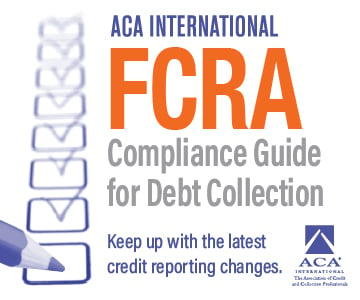
05/11/2023 2:05 P.M.
4.5 minute read
The Consumer Financial Protection Bureau has filed a brief (PDF) in Community Financial Services Association of America Ltd. v. CFPB arguing against a 5th Circuit Court of Appeals’ decision that the bureau’s funding structure is unconstitutional.
The case is set to be heard by the U.S. Supreme Court in its term that begins in October 2023.
In February, the Supreme Court granted the CFPB’s petition (PDF) for certiorari to review the decision on its constitutionality, requesting that the court address whether the 5th Circuit Court of Appeals erred in its ruling that the bureau’s funding structure through the Federal Reserve rather than the congressional appropriations process violates the U.S. Constitution’s separation of powers, ACA International previously reported.
The CFPB argues in its brief that, at the very least, any violation of the Appropriations Clause would not warrant removal of the payday lending rule.
It further argues that if there is an Appropriation Clause violation, the next step is to determine whether the offending provision in the Dodd-Frank statute (Section 5497) can be severed.
The bureau then advocates for a narrow remedy, according to Brownstein Hyatt Farber Schreck Shareholder Julian Ellis Jr., that “forward-looking relief limiting the CFPB’s authority to use funds derived from [the unconstitutional] source to take future enforcement actions under the [p]ayday [l]ending [r]ule against respondents or their members.”
To further hedge against a broad remedy for the constitutional violation, Ellis notes the CFPB said in its brief if the court allows removal of past actions based on the Appropriation Clause violation, it will impact many rulemakings it has enacted under Section 5497 of the Dodd-Frank Act.
“In the 12 years since it was created, the CFPB has taken myriad actions to fulfill its statutory responsibilities using funds appropriated by Section 5497,” the bureau’s brief states. “It has issued more than 200 final rules” and “[t]hose rules govern important aspects of countless transactions involving both regulated entities and individual consumers every day, affecting the way homes are mortgaged, cars are purchased, credit cards are administered, loans are made, debts are collected, and banks are run.”
The CFPB also cites the Mortgage Bankers Association, National Association of Home Builders, and National Association of Realtors’ amicus brief in Seila Law to argue that regulated entities agree that “calling into question the ongoing legitimacy of the CFPB’s past action” would be “catastrophic” to the consumer-finance industry (see page 48 of the brief).
In Seila Law v. Consumer Financial Protection Bureau, the Supreme Court ruled that the structure of the CFPB having a director only removable for cause violated the separation of powers in the U.S. Constitution.
ACA’s Take
ACA has long advocated for the bureau’s funding to be through the congressional appropriations process and respects the process that is about to unfold before the Supreme Court.
In designing the CFPB, Congress debated various structures and ultimately, in a partisan manner, opted for as little accountability as possible, which has been problematic ever since, said Leah Dempsey, shareholder at Brownstein Hyatt Farber Schreck and ACA’s lobbyist.
“Funding through the congressional appropriations process for the CFPB will bring value to regulated entities and consumers in terms of greater transparency and following the existing rules to get better outcomes for the American public by involving all relevant parties in decision-making,” said ACA CEO Scott Purcell. “The congressional appropriations process was contemplated to create a strong balance of all stakeholders.”
There are a few possible outcomes at this time, although it is early in the proceedings and oral arguments will be considered.
According to a client alert from Brownstein:
- “The Supreme Court could strike just the offending language from the Dodd-Frank Act and send the funding question back to Congress to decide how the CFPB should be funded by passing new legislation. It is possible the court could set a time frame for Congress to act, but given the likely timing for a decision to be in the spring of 2024, the heated politics of a presidential election in the final stretches, and a divided government, will almost certainly mean Congress would face challenges meeting any prescribed deadline.
- The court could strike the language concerning funding with no directive to Congress. This would effectively freeze the ability of the CFPB to function until Congress acts on its own. In this scenario it is possible that everything the CFPB has done would be found null and void. If Congress does successfully restructure the CFPB to meet constitutional requirements, a new director might attempt to go back and ratify all past actions, which arguably could then prompt even more litigation.
- The court could take the pen and rewrite Dodd-Frank to place the CFPB under the authority of the House and Senate Appropriations committees. We view this as a less likely scenario since the Supreme Court does not usually like to take the pen out of Congress’ hand.”
With the case review not beginning until October this year, a decision is expected to be issued between December 2023 and the end of June 2024.
Regulatory and legislative issues related to the CFPB, and other advocacy topics will be discussed at next week’s Washington Insights Fly-In, and there is still time to register. Join us May 15-17 on Capitol Hill!
Remember, subscribe to ACA Daily and Member Alerts under your My ACA profile when logged in to acainternational.org to receive updates on the ACA Huddle.










